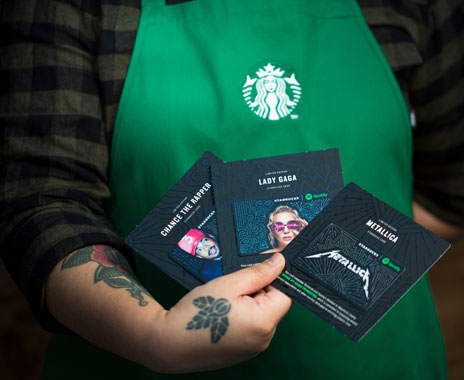A Starbucks in Seattle is now accepting only cards and mobile payments. Local outlet KIRO 7 reported that the location inside the Russell Investment Center in Downtown Seattle has ditched cash, and that Starbucks is hoping to gather customer and employee feedback from the experience.
It isn’t clear if the pilot will expand to additional locations. The cashless movement is popular in some quick-service circles, although it’s unlikely to take hold anytime soon.
READ MORE: The case against going cashless
Shake Shack announced in October that it’s testing a kiosk-only, cashless unit at 51 Astor Place in Manhattan. At the time, Shake Shack CEO Randy Garutti said that delivery integration and digital innovation would continue to be focuses at the Astor Place location. He said these technological advances would help Shake Shack get to know its customers better and assist them more efficiently.
There are still plenty of advantages to cash, other than the obvious nostalgic notes. For example, it doesn’t come with a service fee. Jersey Mike’s said recently that cash transactions still make up close to 35 percent of all orders, although that’s down from about 50 percent five years ago. It’s about always saying yes to a customer. But the tide is turning a bit.
A study from Oracle Hospitality asked more than 15,000 consumers around the world about their use of cash and other payment methods in restaurants and other foodservice outlets. It showed that a third of consumers believe cash will still be used in restaurants and other hospitality outlets by 2022. The data also found that 54 percent of consumers expect to personally use cash less over the next five years and that 47 percent believe they will use mobile payment and digital wallets more.
For restaurants, going cashless has several pros. It helps gather information that can be used in other places, as opposed to cash, which is an anonymous transaction. Big data is key for many brands, especially when it comes to loyalty and rewards programs.
Cashless transactions can also streamline the payment process, requiring fewer workers and less equipment. It also cuts down on employee theft and reduces shrinkage. Sweetgreen might be the largest chain to have made the cashless switch.
Back in July, Visa also announced a challenge incentivizing restaurants to go cashless.
In Starbucks’ case, the chain is already a digital leader and courts a customer base familiar with its mobile and virtual offerings. Mobile order and pay reached 10 percent of all transactions in the U.S. in the fourth quarter, and membership in Starbucks Rewards increased 11 percent, year-over-year, to 13.3 million active members, with member spend accounting for 36 percent of U.S. company-operated sales.


